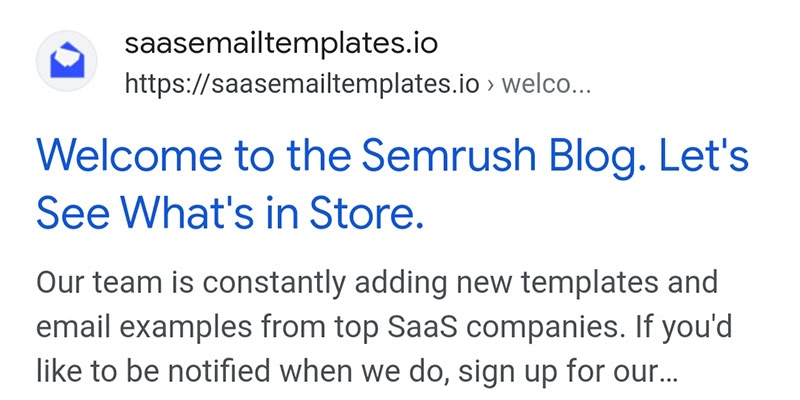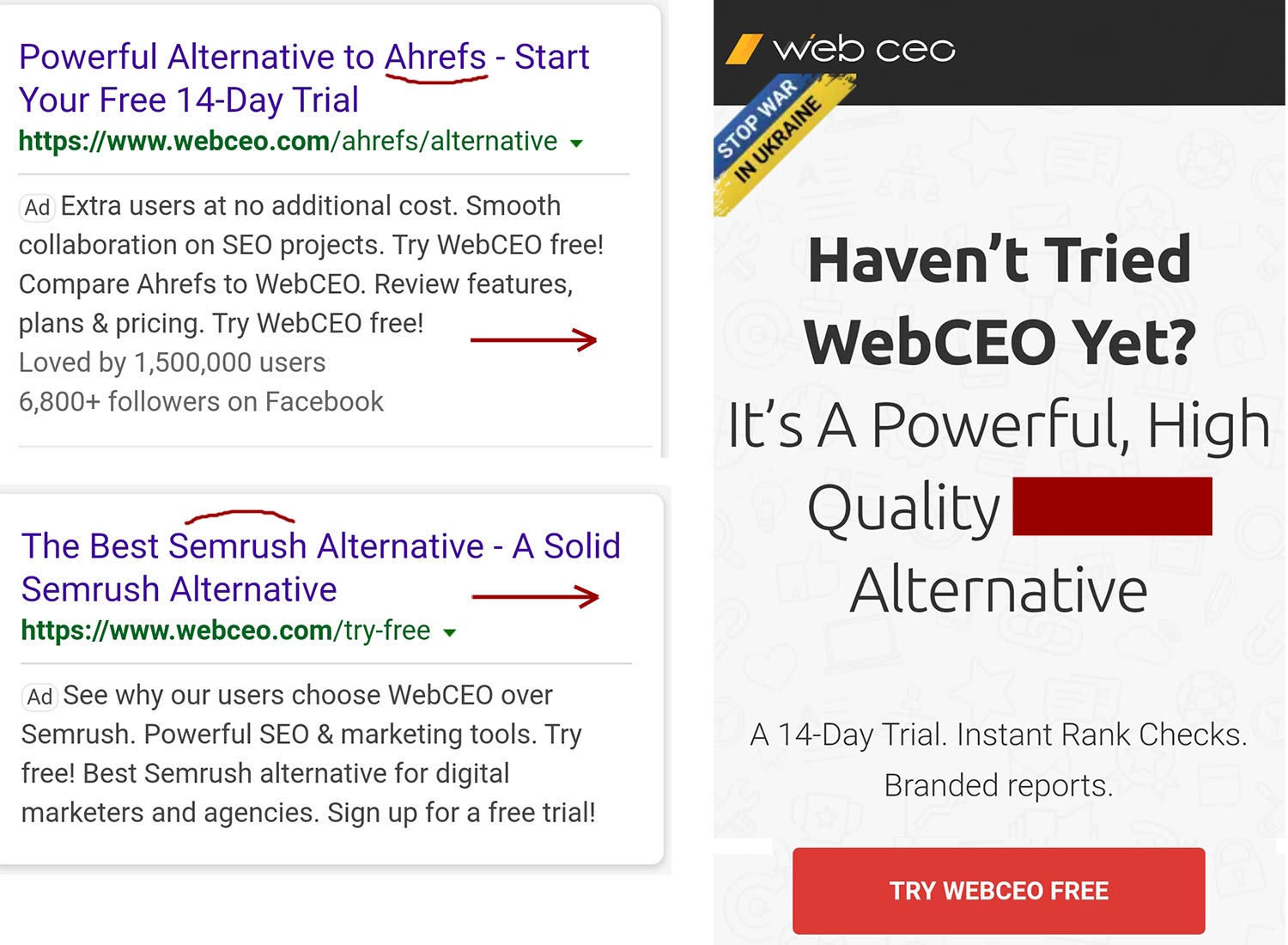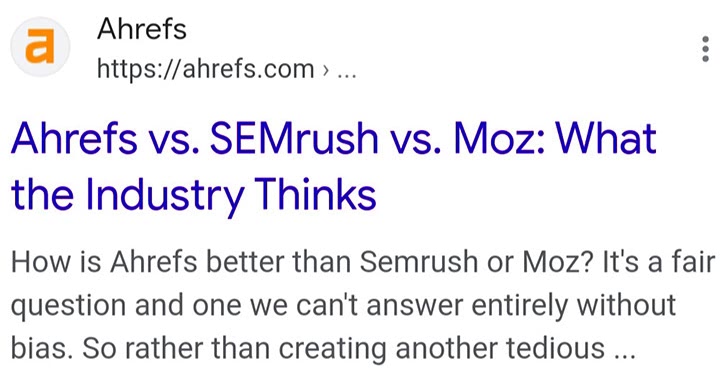An (anti)guide on competitor’s brand query hijacking
- Your brand alternatives are ours!
- Navigational query interception
- Substitution of the user’s search intent
- Competitor’s brand keywords in advertising
- Domain name hijacking
Let’s face it: if you force a competitor out of search results for a commercial query, you won’t even feel a pang of conscience. But how acceptable is it to tamper with web searches for someone else’s brand name? Today, we’re talking about competitor brand hijacking.

OpenAI Dall-E2 generated image
This worthy occupation has some conventional types, such as:
- page optimization for “competitor’s brand alternatives”, “brand pros and cons”, “brand VS other brands”, etc. The possibilities will be prompted to you by a keyword planner from any search engine.
- advertising for search queries, including navigational, for which the competitor is already highly ranked (“brand website” or just “brand”).
And some marginal ones that are, unfortunately, still in use:
- copying a supplier’s ads by retailers and spoofing the contact information (i.e., affiliate fraud, in which partners are rewarded for stolen sales);
- optimizing your page for “(other) brand contact us” and “brand get in touch”;
- domain name hijacking – the creation of a site with a similar address or the same name on another first-level domain (i.e., your-site.org and your-site.in.ua). Can be used by unofficial brand sellers in local markets.
Think it’s hard to look like someone else on SERP? It’s easy! Only the name of the domain can give away the forgery:

This so-called “Semrush Blog” is just selling their email template
It’s impossible to list all the ways to steal branded keywords because new ones emerge with enviable regularity. So what to do? For those who have already been attacked by black-hat SEO, all that remains is to report it to the police to Google and try to get at least the passport back remove the content from Search and Ads. But other brands should carry out a set of anti-theft measures in advance.
Let’s take a closer look at methods for driving users away from SERP for competitor’s brand queries, as well as ways to protect your brand online. It may be interesting to pay attention to cases involving big SEO brands.
Appropriation of a famous brand alternatives
The tactic is to prepare an article about the brand’s flagship product and optimize it for “brand alternatives”, “how to substitute the brand”, etc. Keep in mind the following TOR:
- Point out the generally accepted positive qualities of the product.
- Identify its weaknesses, and for each, offer an alternative without that shortcoming.
- Gently add the right brand to the list, highlighting one of its outstanding advantages.
Easy, legitimate, and effective. There are plenty of examples around. Here are fragments from the first Bing’s SERP page for the “Ahrefs” keyword (everything as it should be: numbers in headlines, the best alternatives, free and paid, etc.)


And here is another kind of snippet: Serpstat offers itself as an analogue to all top SEO platforms. After visiting the website, users will get an offer to try the product for free. It must work!

Defense. Honestly, it’s quite burdensome. In competitive niches, countless sites live off “brand comparisons” and “reviews of budget alternatives”. It’s hard to get ahead of them for such queries, but it’s worth fighting for.
Owners of an authoritative domain can take Ahrefs as an example and place on their site a “collection of expert opinions” about their product and competitive analogues (in this case, SEMrush and Moz):

Content on ahrefs.com has the potential to be highly ranked. However, sites that are less respected by search engines will convince the user not in the search results but at home. For them, I offer a more risky but impactful method of protection against alternative hijacking.
The brave little brand’s website should feature an essay with the headlines “We among the competitors”, “When to use and NOT use our product”, or another appropriate one. The text should outline the advantages and benefits of using the product and include a section like the one below:
The task we are currently not able to solve ⟼ Our favorite competitor that will do ⟼ A discount for you if you want to come back. And you probably will, because we are evolving and planning to implement new features.
Such an article will add points to the brand’s reputation, if only someone reads it. For this to happen, the company’s home page must be at the top of the “company brand” search. You say, “Can it be otherwise?” – Easy.
Intercepting a competitor’s navigation query
It works if the victim brand is poorly represented in the local segment of the Internet. As an example, this is a “SEMRUSH”-optimized article on the blog of another SEO company, successfully operating in Runet. The page about competitor analysis is in Russian; its title translates to “SEMRUSH. Spying on competitors in website promotion — Netpeak Blog”.

The post is old, but even in 2018, it often appeared at the top of the search results in Google and Yandex when searching “SEMRUSH” on Runet. Not anymore, because Semrush expanded into the post-Soviet market a long time ago.
So, let’s go through the experience of pros. In addition to optimizing the text for a “competitor brand”, you can:
- Claim that your competitor is targeting a different Internet segment. You can even provide a rationale for why the target segment is being ignored.
- If the competitor’s site has changed its address, refer to the old one and let a redirect happen when search engine bots follow the link.
- In a stricter version, link out of context to a page with restricted access if you find one on the competitor’s website.
Protecting the brand from this hijacking tactic is only possible with an active content strategy and wide representation on social networks (choose the most popular in the target region). Each social profile should have a link to the localized company website. Otherwise, you’ll stay “focused on the distant foreign market, because more money circulates there”.
Distorting the user intent in branded keyword searches
Just imagine that the competitor’s target audience, which is usually looking for “brand discounts”, suddenly wants to know about the “brand scandal”. How do you achieve it? For example, like this:

The portal’s office phone is abuzz with anonymous calls offering to reveal the brand’s trade secrets and dirty tricks. The RSS feed is broadcasting suspicious activity by brand representatives. Brand analogues run out of stock and are distributed “under the table”, at exorbitant prices. Children are scared by the brand name and taught not to approach if they come across the brand on Google.
Yes, this is overkill, but you shouldn’t wait for an unfair competitor to use such tactics. It’s better to engage in prevention.
You are lucky if there is a Great Guy among the bloggers or industry influencers who benefited from the brand’s products in a difficult situation and is grateful for this from the bottom of his heart. He could review the products, compliment the customer service and support team, and even mention some shortcomings in a friendly way.
You say you don’t have such friends? It’s a pity; it wouldn’t hurt to make some.
In addition, it’s worth remembering about social media marketing, increasing brand awareness, taking tours around the manufacturing facility, and making your employees feel proud to be a part of your company.
Buying Search Ads for the competitor’s brand keyphrases
If the competitor is not trying to impersonate you, this tactic is completely legal. The only way to fight is to buy Google (or Microsoft) Adwords too. Yeah, for those queries for which you are already No. 1 in organic search results!
It’s acceptable not to do this only for market leaders who are confident in the consumers’ loyalty or for those who don’t count on the conversions in a specific region. Since we’re taking a closer look at the SEO pros, let’s pay attention to the difference in Moz’s and Ahrefs’s approaches. The first are advertised for both their own and competitors’ brand keys; the latter rely on organics only.

If a competitor lies in the ad text, the main task is to expose it and file a complaint with the search engine Ads service. But it can be difficult to detect fraud since such ads often have geographic targeting. Also, the hijackers may buy impressions on other search engines where the victim is not promoted (for example, not in Google but in Bing).
It’s also hard to fight brand hijacking on retail platforms like Amazon. The platform has a vested interest in sales, and its interests are not harmed if the seller is not an official store but a counterfeit store (provided the customer is not deceived about the origin of the product).
Domain hijacking: branded domain name falsification
Websites that look similar to the site of a respectable brand are typically created to direct organic and advertising traffic there. If the domain name doesn’t correspond with the registered trademark, it’ll be nearly impossible to fight the fraudsters. Otherwise, it’s possible, but the process can be long and complicated.
So if there is a long-term business plan associated with your site, it makes sense to buy up similar names on all major top-level domains (.org, .com, .info and so on) and merge them with the main domain by permanent redirection. Even Google has to do this to avoid endangering users: for example, google.info, google.net, and even googel.com will redirect your browser to a well-known google.com.
To summarize. When your business has grown, you shouldn’t relax; you need to keep an eye on search engine results. After all, if you don’t lead the Top-10 for branded key phrases, your competitors will do it for you — at the price of copywriting fees (or even for free, with the help of ChatGPT)!